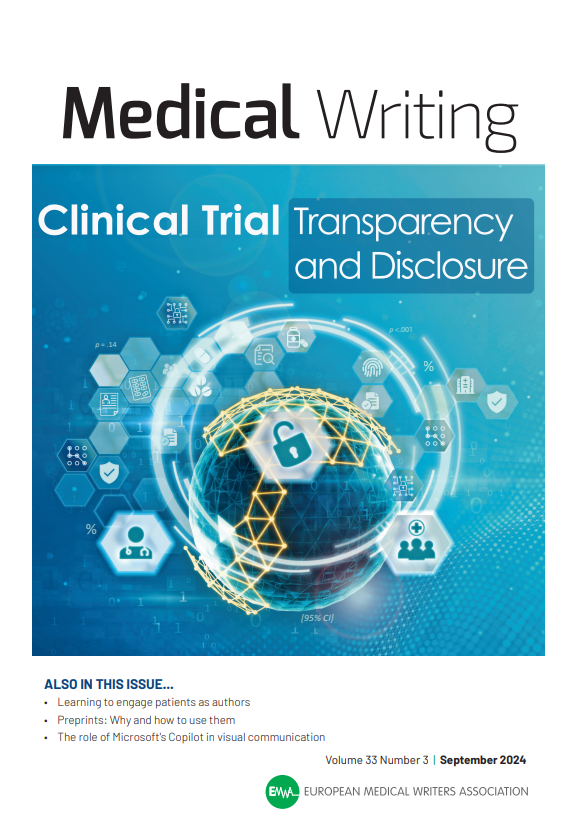
Volume 33, Issue 3 - Clinical Trial Transparency and Disclosure
Plain language summaries of clinical trial results: What is their role, and should patients and AI be involved?
Author: Lisa Chamberlain James
Abstract
Plain language summaries (PLSs) of clinical trial results are vital tools in the clinical development process for enhancing transparency and encouraging and facilitating patient engagement. The production of a PLS is now mandated in the EU for all interventional clinical trials by the European Medicines Agency under Regulation EU 536/2014 and became compulsory with the opening of the Clinical Trial Information System portal in January 2022. PLSs are intended to be accessible, comprehensible documents conveying complex trial findings to diverse audiences. This article explores the significance of PLSs, the importance of patient input in their production, and the role and concerns surrounding the use of artificial intelligence in generating them.
Medical Writing. 2024;33(3):34–37. https://doi.org/10.56012/yayy4394
 Download the full article
Download the full article
Search
Articles
Links
Editoral Board
Editor-in-Chief
Co-Editors
Senior Editor
Victoria White
Managing Editor
Alicia Brooks Waltman
Associate Editors
Section Editors
AI/Automation
Biotechnology
Digital Communication
EMWA News
Freelancing
Gained in Translation
Getting Your Foot in the Door
Good Writing Practice
Pablo Izquierdo / Alison McIntosh
In the Bookstores
Publications
Medical Communications/Writing for Patients
Medical Devices
My First Medical Writing
News from the EMA
Pharmacovigilance
Regulatory Matters
Regulatory Public Disclosure
Louisa Ludwig-Begall / Sarah Kabani
The Crofter: Sustainable Communications
Veterinary Writing
Editors Emeritus
Layout Designer
Chris Monk
 Visit the EMWA website
Visit the EMWA website